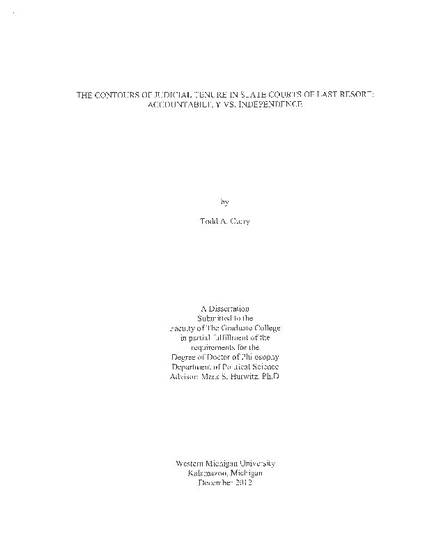
- Judicial selection,
- state courts,
- judicial independence
The study of state courts of last resort is a field which has, up until recently, been significantly underrepresented in political science (Baum 1987, Dubois 1980). The bulk of work in judicial politics over the last fifty years has focused on the federal system. Furthermore, the study of state courts allows for a true comparative analysis. The methods of selection used for the staffing of state courts of last resort are highly varied. There are five distinctly different methods which are used for judicial selection in the states, and many states have institutional nuances that provide further variation for study. This dissertation will utilize event history analysis to examine if the method of selection in state courts of last resort has a causal effect on the tenure of Supreme Court justices under a variety of different political contexts. Event history analysis is the appropriate method in order to answer this question, as it will allow me to examine first, what the determinants of judicial tenure length are, and second, compare the selection methods to each other.
I will examine three related aspects of methods of selection for state supreme courts. First, I will enter the debate concerning the accountability and independence elicited by the different methods of selection. Second, I will examine the effect of campaign spending by challengers and incumbents on the length of judicial tenure in states which utilize elections. Third, I will examine to what level judges across all methods of selection behave strategically with regard to retirement. I find that out of out each of the methods of selection, partisan elections exhibit the most accountability, with retention elections exhibiting the least. Also, in states which elect their judges, the amount of money spent during the election has no statistical effect on the term length of the justice. Finally, justices in all systems are likely to engage in strategic retirement, however in different ways. Justices who are elected retire when their likelihood of electoral defeat is high while justices who are appointed are likely to retire when an ideologically congruent body can choose their replacement.
Available at: http://works.bepress.com/todd_curry/1/
